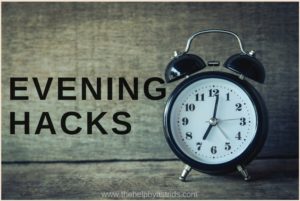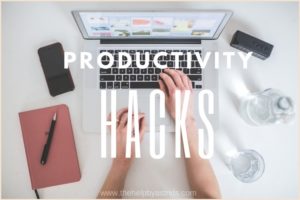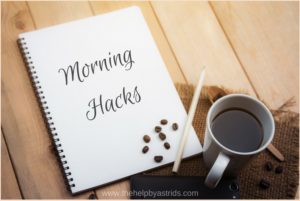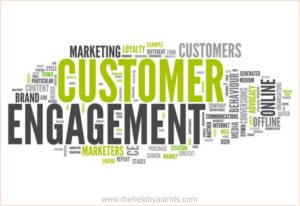 For the past 2 weeks, I talked about my quest for discovering productivity hacks and improving and developing my work strategies. I’ve shared some of the things I learned in parts 1 and 2 of this 3-part series. I talked about all day hacks last week. This week I would like to share the strategies I learned to make your evenings more productive.
For the past 2 weeks, I talked about my quest for discovering productivity hacks and improving and developing my work strategies. I’ve shared some of the things I learned in parts 1 and 2 of this 3-part series. I talked about all day hacks last week. This week I would like to share the strategies I learned to make your evenings more productive.
Evenings are supposed to be your ME time, so use that time wisely. I’m still trying to work out the best time to set for myself for a “hard stop” or the absolute time when I absolutely stop working. It changes with the season and depending on the amount of work I have (freelancers do have peak and lean seasons, you know). Right now, it is set to 6pm. I’ve set an alarm for myself on my phone. It is mostly working.
Evening Hacks
Evenings are used to create a clear delineation between work and personal time. It’s when you find the time to do things for yourself and your family. But evenings can also be used to make sure that you are optimized for productivity for the next day. Besides, if you can map out your day, you’re sure to have less stress and less things to worry about.
● Clear your desk – I have a “closing shop” routine. It’s something I do to signal to my brain that the work day is over and personal time has begun. At the end of each work day, I declutter my work station and wipe down my keyboard and monitors. You may have your own version of closing shop that involves more than powering down your PC or laptop. Whatever it is, develop a routine that helps get you into a mindset of leaving your work-related worries at work and starting an off-work mindset. That way, you can power down and get some much-needed rest instead of having work related worries that sit on your mind long after the work day is through.
● Lay out your clothes – Ever heard of the term “Decision Fatigue”? Decision fatigue refers to the deteriorating quality of decisions made by an individual after a long session of decision making [1]. Laying out your clothes (or setting them aside in your closet) can eliminate one decision making task for the next day. It might not seem like much now, but if you’re constantly making decisions as part of your work, then not having to choose an attire would be a welcome break. If you don’t believe me, look at Obama, Jobs, and Zuckerberg. Obama is famously quoted in a 2012 Vanity Fair article to say: “You’ll see I wear only gray or blue suits, I’m trying to pare down decisions. I don’t want to make decisions about what I’m eating or wearing. Because I have too many other decisions to make.[2]”
● More apps – When you’re laying in bed and trying to get some sleep, this is when most ideas hit you. This is also the perfect time to remember the milk…and some eggs…and an air freshener, you have to get those. I think this is universally true for all of us. Random things and small reminders hit us in the middle of the night. Instead of worrying about forgetting them, write them down. I already mentioned that I use a note-taking app. I keep it simple and use Google Keep on my phone. You can use the apps that come with your phone, or you can use Evernote, OmniNotes, or OneNote.
What are your evening hacks? We’d love to hear about your productivity hacks. Share them with us in the comments. Stay humble and hustle hard!
References:
https://en.wikipedia.org/wiki/Decision_fatigue
https://www.vanityfair.com/news/2012/10/michael-lewis-profile-barack-obama
 Last week I talked about my quest for discovering productivity hacks and improving and developing my work strategies. I’ve shared some of the things I learned in part 1 of this 3-part series. I talked about morning hacks last week. This week I would like to share the strategies I learned to make you more efficient at work for the rest of the day.
Last week I talked about my quest for discovering productivity hacks and improving and developing my work strategies. I’ve shared some of the things I learned in part 1 of this 3-part series. I talked about morning hacks last week. This week I would like to share the strategies I learned to make you more efficient at work for the rest of the day. I’m always on the lookout for productivity hacks, little things that can improve the way I work. I’ve tried a few of them that you can read
I’m always on the lookout for productivity hacks, little things that can improve the way I work. I’ve tried a few of them that you can read  Let’s face it, with all the viable options and a huge selection of companies probably offering the same type of service or product as your business, it is not enough to offer high-quality products and services. They can buy from you (even repeatedly at some point) but if you want your customers to be loyal and remain loyal, you should find ways to engage with your customers in between visits to your business.
Let’s face it, with all the viable options and a huge selection of companies probably offering the same type of service or product as your business, it is not enough to offer high-quality products and services. They can buy from you (even repeatedly at some point) but if you want your customers to be loyal and remain loyal, you should find ways to engage with your customers in between visits to your business. First of all, what is a Ketogenic Diet? A Ketogenic Diet or Keto Diet is a high fat, low carbohydrate, protein filled diet. It works on the premise that carbs are your main source of energy and by lowering your carb intake, your body taps into fat to use as fuel. This is done in a process called Ketosis.
First of all, what is a Ketogenic Diet? A Ketogenic Diet or Keto Diet is a high fat, low carbohydrate, protein filled diet. It works on the premise that carbs are your main source of energy and by lowering your carb intake, your body taps into fat to use as fuel. This is done in a process called Ketosis.